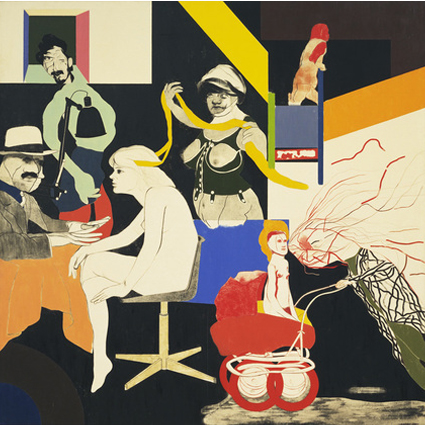The man who would leapfrog his way into History on the backs of giants stands exposed.' Andrew Graham-Dixon on Kitaj at the Tate
R B Kitaj, a man well versed in the literature of Western Europe, is doubtless familiar with the old French expression ''Il ne se prend pas pour de la merde'', which may be literally if a little clumsily translated as ''He does not take himself for a piece of excrement''. Kitaj, for one, most certainly does not. The absolute assurance with which he views himself as an artist of world-historical significance lends his exhibition at the Tate Gallery a poignancy which his paintings themselves, so cold-hearted, never begin to achieve. ''R B Kitaj: A Retrospective'' presents the dispiriting, admonitory spectacle of an oeuvre ruined by fatal self-delusion.
The myth that Kitaj has so painstakingly constructed around his life and work has seduced many into believing that he is a considerable painter. The Kitaj of Kitaj's legend is a turbulent intellectual in permanent geographical exile from his native country, America, and in permanent emotional exile from the broader modern culture which he disconsolately occupies. A Wandering Jew for the 20th century, this mythical Kitaj is the visual poet of diaspora and the style of his art, with its broken, discontinuous surfaces, its enigmatic elisions of unlike subject matters, reflects nothing less than the vagaries of the Human Condition itself.
''The paradigm of Kitaj's art,'' according to one of the more breathless believers in Kitaj's myth, ''is Eliot's Wasteland.'' According to Kitaj himself, an inveterate name-dropper who claims Muse-like inspiration from a quite remarkable number of major writers and painters ranging from Kafka to Matisse, Jean-Jaques Rousseau to Walter Benjamin, ''I'd like to try, not only to do Cezanne and Degas again after Surrealism, but after Auschwitz,...


